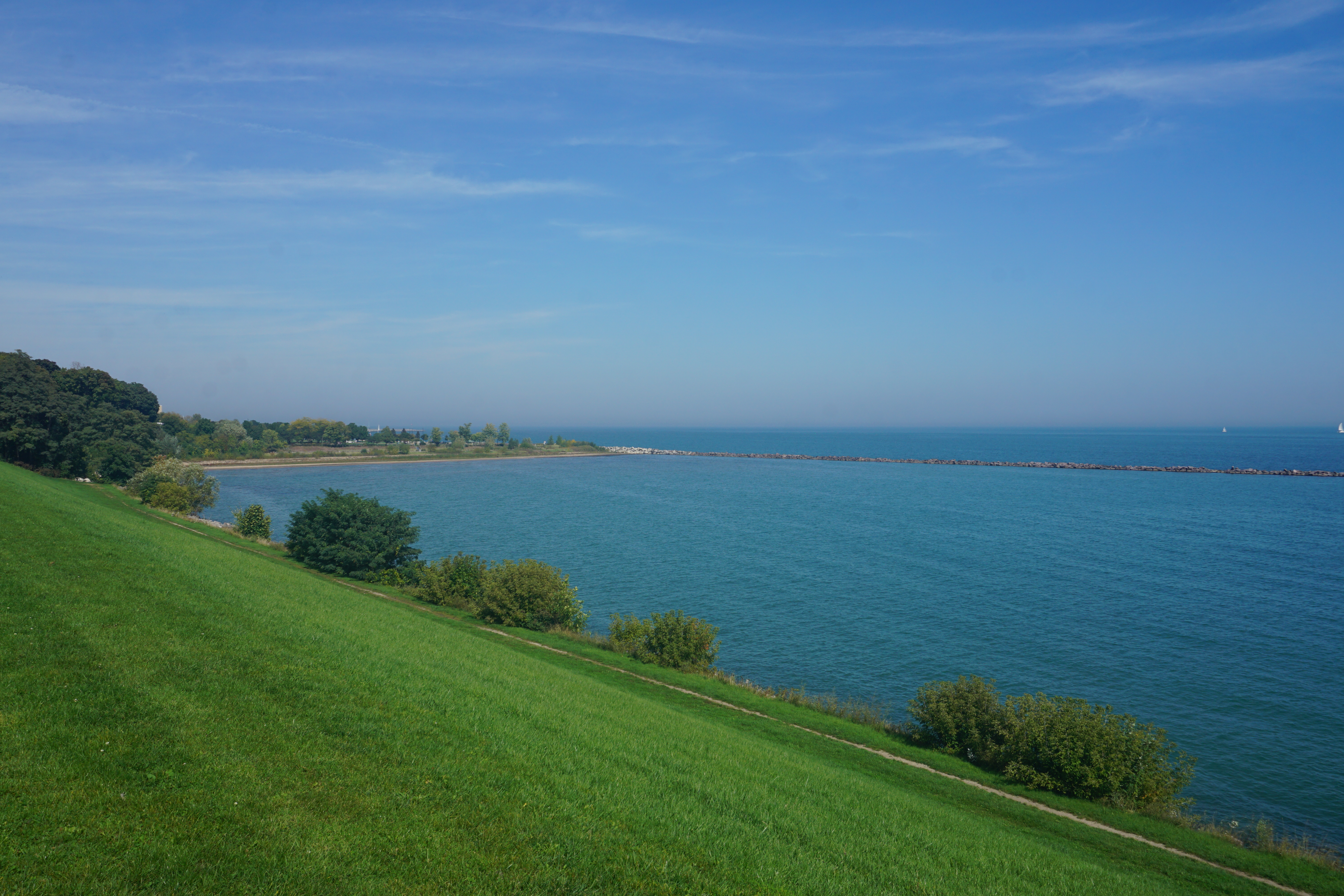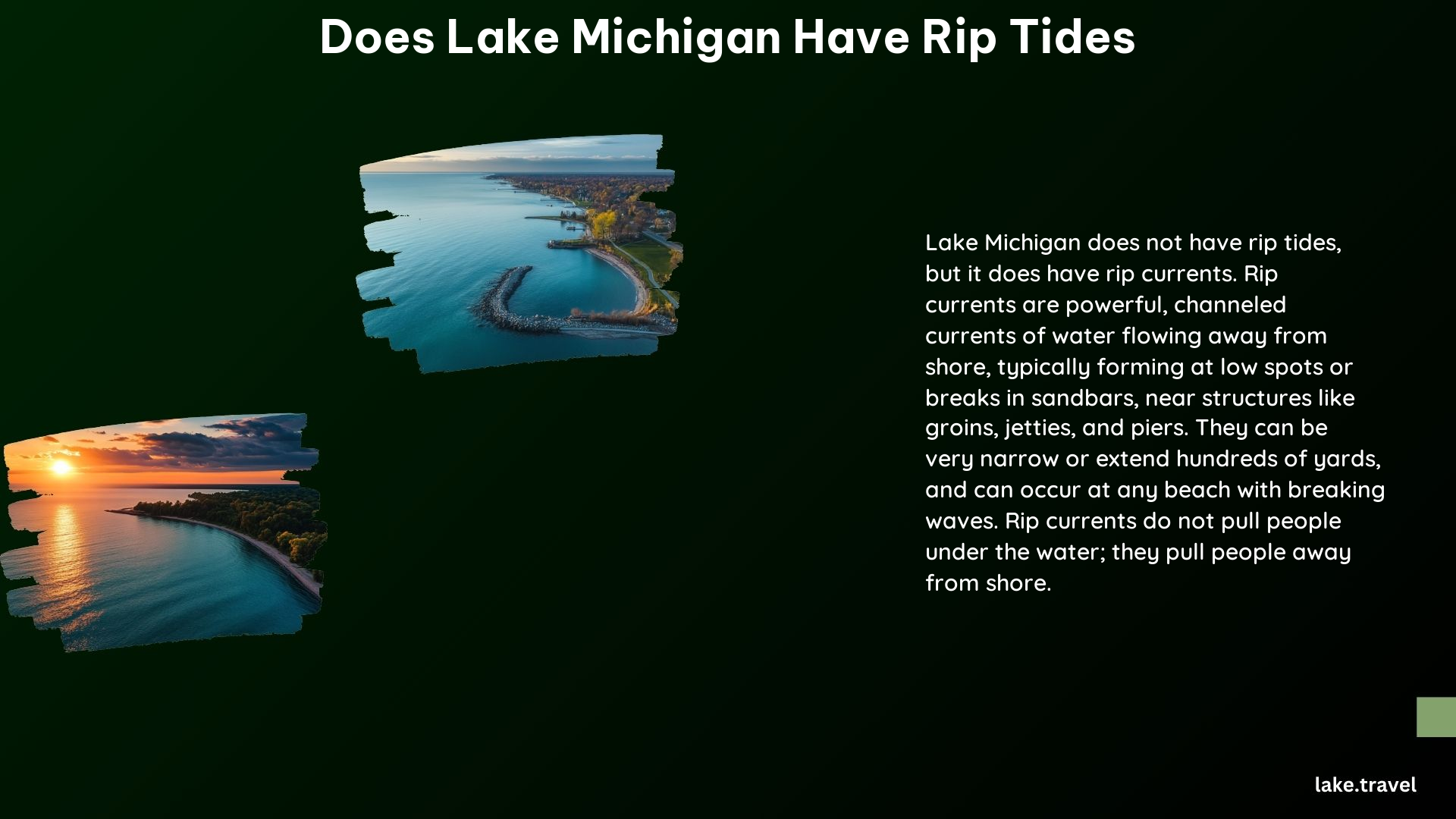Lake Michigan, one of the Great Lakes, is a popular destination for water enthusiasts, but many wonder if it experiences the dangerous phenomenon known as rip tides. The short answer is no – Lake Michigan does not have rip tides. Instead, the lake is prone to a different type of hazardous current called rip currents.
Understanding Rip Currents in Lake Michigan

Rip currents are powerful, narrow channels of water that flow away from the shore, often forming when waves break over a sandbar near the shoreline. These currents can occur even when there are no significant tides, as the Great Lakes do not experience the same tidal patterns as the ocean.
Rip currents in Lake Michigan are most likely to form when the wind is blowing towards the shore and the waves appear chaotic. They can also develop near structures such as piers and breakwalls, where the water piles up and then flows back out to the lake, creating a strong current.
Identifying Rip Currents

Recognizing the signs of a rip current is crucial for staying safe on Lake Michigan’s beaches. Some common indicators include:
- Choppy, Churning Water: Rip currents often create a visible break in the wave pattern, with water appearing to flow out from the shore in a narrow, channel-like formation.
- Discolored or Murky Water: Rip currents can carry sediment and debris, making the water appear different in color or more turbulent than the surrounding areas.
- Floating Debris: Rip currents can carry seaweed, driftwood, or other floating objects away from the shore, providing a visual cue to their presence.
Staying Safe from Rip Currents
To ensure your safety while enjoying Lake Michigan’s beaches, it’s essential to follow these guidelines:
- Check the Weather and Beach Conditions: Before heading to the beach, consult the National Weather Service’s Great Lakes Beach Hazard page for up-to-date warnings and forecasts.
- Swim at Lifeguarded Beaches: Lifeguards can provide accurate assessments of local beach conditions and assist in emergencies.
- Know Your Swimming Ability: Be honest about your swimming skills and avoid swimming in areas with strong currents if you are not confident.
- Learn the “Flip, Float, and Follow” Strategy: If caught in a rip current, the recommended response is to float on your back, regulate your breathing, and swim parallel to the shore to escape the current.
Conclusion
While Lake Michigan may not experience rip tides, it is essential for beachgoers to be aware of the presence of rip currents and take the necessary precautions to stay safe. By understanding the signs of rip currents, checking weather and beach conditions, and following safety guidelines, you can enjoy the beauty of Lake Michigan’s shores while minimizing the risks associated with these powerful, dangerous currents.
